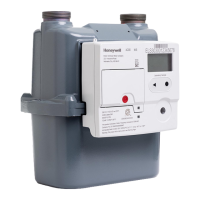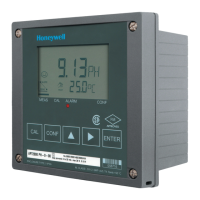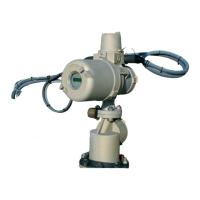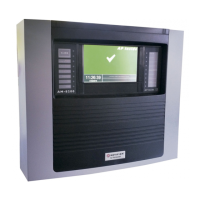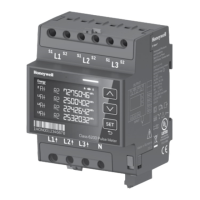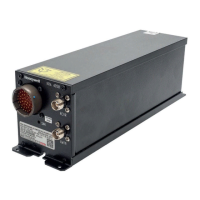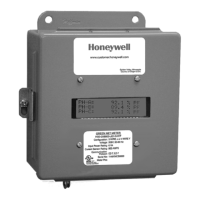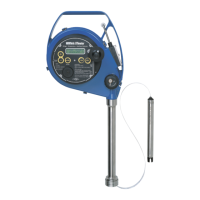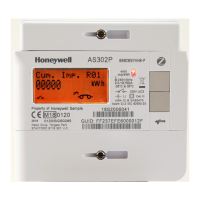
Do you have a question about the Honeywell AS302P and is the answer not in the manual?
| Brand | Honeywell |
|---|---|
| Model | AS302P |
| Category | Measuring Instruments |
| Language | English |
General safety compliance and responsibilities outlined in the manual.
Employer duties regarding user safety and proper training for product handling.
Guidelines for proper product installation and initial operation.
Warning regarding internal circuits connected to phase voltages.
Safety steps before removing meter covers to prevent electric shock.
Handling precautions for toxic liquid crystal display material.
Safety instructions for the internal lithium coin cell battery.
Precautions regarding condensation when changing temperatures.
Current limit and cable protection requirements for the auxiliary relay.
Details on the meter's operational voltage, current, and frequency ratings.
Description of the meter's terminal connections.
Types of energy measured by the meter.
Accuracy classes for active and reactive energy measurements.
Case specifications, protection rating, and tamper detection methods.
Description of the optical test output and pulse rates.
Details on anti-creep thresholds and indicator operation.
How kWh and kvarh energy quantities are registered.
Information on demand registers and their operational periods.
Actions and configurations when changing the meter's operating mode.
Configuration of supplier contact information.
Procedures for restricting data visibility on the display.
Process and information for setting deferred tariffs.
Overview of Time-of-Use (TOU) and Block tariff structures.
Rules for tariff switching across defined seasons.
Defining daily and weekly profiles for tariff variations.
Configuring special days and TOU price rates.
Configuration of daily standing charges.
Details on Time-of-Use (TOU) block tariffs and configuration.
Pricing structure for TOU block tariffs.
Calculation and storage of maximum demands.
Overview of different types of billing data logs.
Captures periodic billing data with timestamps.
Logs changes in operating mode or tariff structure.
Logs payment credits and debt recovery events.
Storage of daily meter readings.
Details of daily logs for different meter modes.
Stored data for billing and cost estimation.
How the meter balance is calculated and viewed in credit mode.
Details on the five supported load profiles.
Functionality and balance viewing in prepayment mode.
Alerts for low meter balance conditions.
Threshold for opening the contactor based on meter balance.
Methods for adding credit to the meter.
Details on WAN/HAN and manual UTRN credit top-up.
Step-by-step guide for entering UTRN codes.
Deduction process before applying credit.
Procedures for offering and using emergency credit.
Periods when supply is not disconnected.
Details on three types of debt and their collection.
Collection of time-based debts.
Debt collection method linked to credit top-ups.
Definitions of accumulated and aggregated debt.
How the debt to clear amount is determined.
Settings for suspending debt collection processes.
Control of debt collection based on suspend settings.
Description of the LCD display and its resolution capabilities.
Specific display mode used for testing purposes.
Options for display sequence and data presentation.
How to navigate through display items in different modes.
Automatic display settings and list of available data items.
Settings for display items and backlight activation.
Meter status indicators and display event triggers.
Securing access to certain display functions via PIN.
Meter's detection and logging of voltage anomalies.
Recording and reporting of power interruptions.
Overview of available communication ports and standards.
Description of local and direct communication interfaces.
Details on HAN interface and ZigBee standards.
Communication capabilities with DCC and other device types.
Functionality for storing messages from the supplier.
Ensuring firmware authenticity and integrity.
Step-by-step process for updating meter firmware.
Process of distributing and verifying firmware images.
Activating new firmware and any associated restrictions.
Structure of firmware version identification.
Description of ALCS/HCALCS and the auxiliary relay.
Calendar, randomization, and commands for auxiliary switches.
Defining switch states and time offsets.
Commands for controlling switches and logging related events.
Features for boosting ALCS and logging related events.
How the meter manages local time and daylight saving adjustments.
Overview of different access levels defined in GBCS.
Handling of security credentials and cryptographic keys.
Measures to protect data and prevent unauthorized physical access.
Storing security events and data retention policies.
Overview of the different types of logs stored by the meter.
Description of Security, Event, and Power logs.
Functionality for filtering events and alerts.
Detailed technical specifications for the AS302P meter.
Technical details pertaining to the meter's contactor.
Process for setting up HAN and registering devices.
Steps for installation when WAN connectivity is unavailable.
Procedures for removing and decommissioning the meter.
Detailed steps involved in commissioning the meter.
Guidelines for unpacking, handling, and storing meter hardware.
Selecting an appropriate installation site and EMC compliance.
Physical installation, wiring, and final commissioning checks.
Disposal of liquid crystal display and recyclable materials.
Safe disposal and recycling procedures for the battery.
Examples of model code and meter appearance.
Meter nameplate details and terminal wiring diagrams.
Meter physical dimensions and list of displayable items.
Meter identification details and order of accounting logic.
Visual representations of key meter processes.
Methods for verifying meter registration accuracy.
Reference table for meter events and alarms.
List of commands supported via different interfaces.
Glossary of data types and their descriptions.
